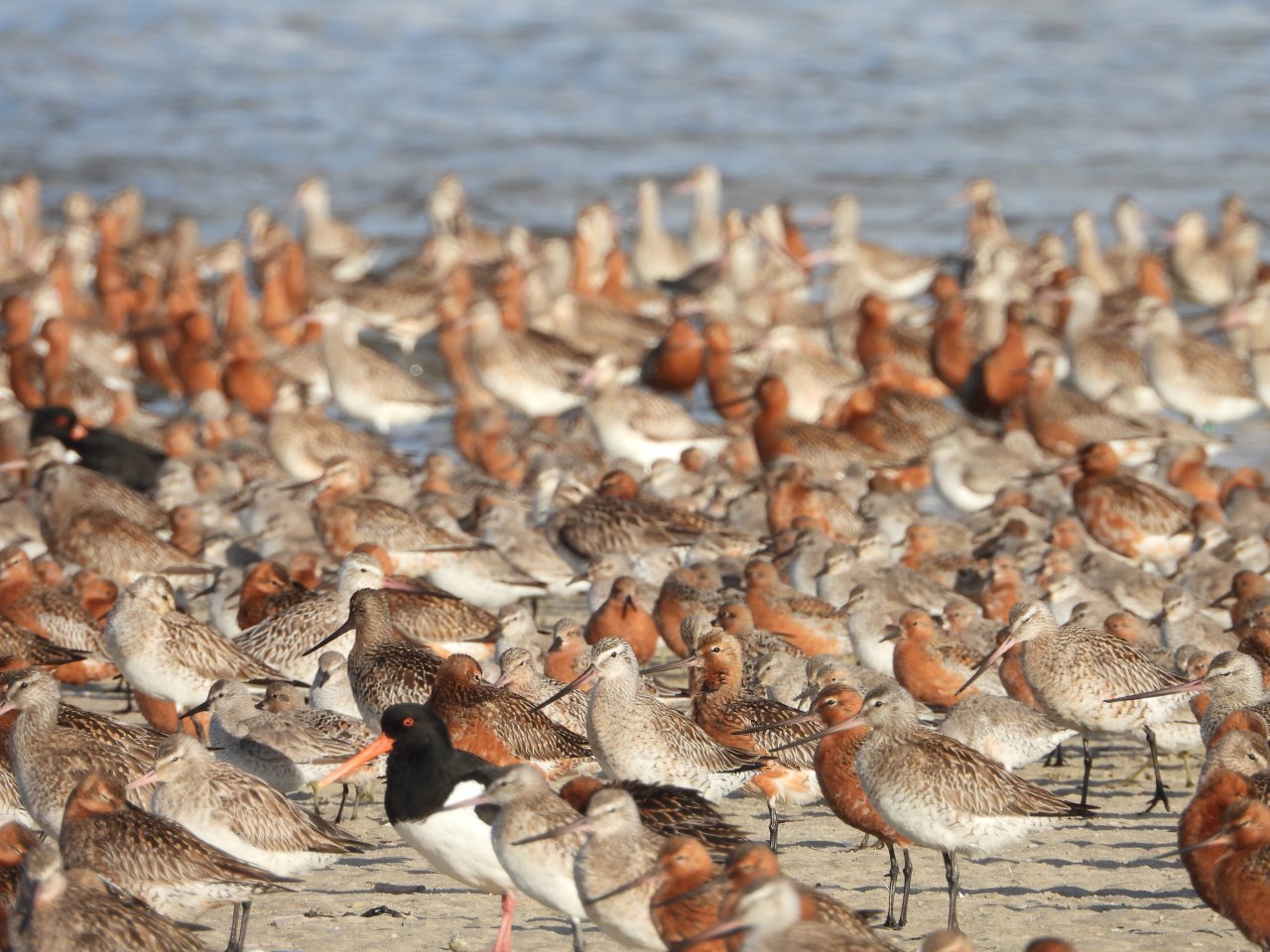Photo: Gert Jan Verbeek
by Theunis Piersma
In June 2016, with a two-day workshop in the field on Terschelling, together with OEROL we summarized and celebrated the Waddenfonds project METAWAD (www.metawad.org). The final act during the workshop was the first performance of TRACKS – a story of friendship and discovery by Sytze Pruiksma and Theunis Piersma and directed by Jos Thie. We celebrated METAWAD, because an evaluation by the Waddenacademie gave this project the highest grade (‘excellent’), including the statement that the long-term observations on demography, distribution and migration of five characteristic and charismatic Wadden Sea birds, the gist of METAWAD, definitely required continuation. Seven years later, we can finally restart a programme of work where we had to leave it in 2016, this time under the name WAAKVOGELS.
To the five species under scrutiny in METAWAD (1 spoonbill, fish-eater of shallow water; 2 brent goose, herbivore of the intertidal, the saltmarsh and the polders; 3 sanderling, shrimp- eater of sandy intertidal flats; 4 red knot, bivalve-specialist of intertidal flats; and bar-tailed godwit, worm-eater of intertidal flats), in WAAKVOGELS we added a sixth, the black-tailed godwit, insect- and worm-eater breeding in the polders (and using the Wadden Sea intertidal flats probably way more than we think). The tested approach is the same: keeping an eye on population processes by way of long-term demographic observations (building on the extensive colour-marking and resighting programmes run by NIOZ, Werkgroep Lepelaar, RUG and NIOO) and examining effects of habitat change, human action and infrastructural works by focussed tracking of individuals. In addition to the satellite and GSM/GPS tracking developed in other projects over the last decade, we can build on the growing WATLAS infrastructure (www.nioz.nl/watlasCHECK). WATLAS will enable us to do relatively low-cost tracking with high-resolution(in time and space)of shorebird species of all sizes across the entire Dutch Wadden Sea.
WAAKVOGELS will be administered from BirdEyes (University of Groningen) with close collaborations with NIOZ, IBED-UvA, NIOO, SOVON and It Fryske Gea and other management organisations. We will also work closely with the project WIJ & WADVOGELS, administered by Vogelbescherming. From 1 September Tjibbe Stelwagen will jump-start WAAKVOGELS in a coordinating role, based at BirdEyes. Funding for WAAKVOGELS comes from Ministerie van LNV, Waddenfonds and the three northern provinces.



